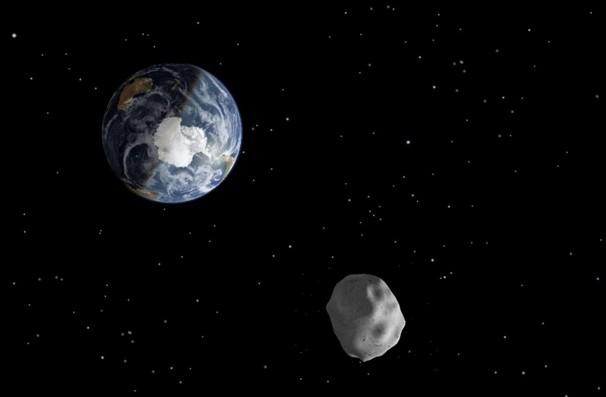NASA wants your help protecting Earth from asteroids
A NASA diagram depicts the passage of asteroid 2012 DA14 through the Earth-moon system on Feb. 15, 2013. (Photo courtesy of NASA/JPL-CALTECH.)
NASA’s new “Asteroid Grand Challenge” hopes to put government agencies and academics together with the public to figure out how to capture an asteroid and “lasso” it into the moon’s orbit for study.
According to a release from NASA, “Grand Challenges are ambitious goals on a national or global scale that capture the imagination and demand advances in innovation and breakthroughs in science and technology. They are an important element of President Obama’s Strategy for American Innovation.”
“NASA already is working to find asteroids that might be a threat to our planet, and while we have found 95 percent of the large asteroids near the Earth’s orbit, we need to find all those that might be a threat to Earth,” NASA Deputy Administrator Lori Garver said. “This Grand Challenge is focused on detecting and characterizing asteroids and learning how to deal with potential threats. We will also harness public engagement, open innovation and citizen science to help solve this global problem.”
While it’s unlikely a Texas-sized asteroid like the one in the movie Armageddon will make contact with Earth in the near future, smaller rocks are the more common threat.
According to NASA, Earth is bombarded with more than 100 tons of dust and sand-sized particles every day and, about once a year, an automobile-sized asteroid hits Earth’s atmosphere, creates a fireball and burns up before reaching the surface.
In February, an estimated 7,000 tons of speeding rock and metal exploded over the Ural Mountain city of Chelyabinsk, Russia, injuring more than 1,200 people.
A month later, Congress asked government officials what would happen if a similar meteor were to strike the United States.
“If it’s coming in three weeks … pray,” said White House science adviser John Holdren. “The reason I can’t do anything in the next three weeks is because for decades we have put it off.”
Along with the challenge, NASA has released a Request for Information inviting industry leaders and potential partners to submit innovative ideas about redirecting asteroids.
“It’s about involving the public and the private sector and doing the kinds of things we can do with modern technology modern connectivity.” said Dr. Denton Ebel, chair and curator for the Division of Physical Sciences at the American Museum of Natural History. “And quite frankly, these kinds of things looking for things out there, have always relied on these kinds of partnerships, particularly the amateur community.”
